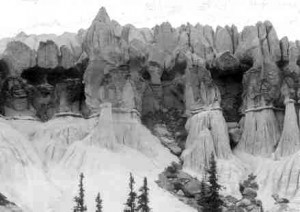Sidebar by Ed Quillen
Sand Dunes – February 2000 – Colorado Central Magazine
What’s the difference between a National Forest and a National Park? Or between a National Park and a National Monument?
Start with the easy one, Monument vs. Park. Both are administered by the National Park Service, part of the U.S. Department of the Interior, and in general, the same regulations and policies apply to both.
Monuments are established on land that is already owned by the federal government, and they usually result from a presidential proclamation under the Antiquities Act. A Park requires an act of congress, and may involve an appropriation to buy land for the park.
In general, Monuments tend to be smaller than Parks, and to focus on historical events at a site, rather than scenic or other values. But that’s a generality that is more accurate in other states where battlefields and the like are often set aside as monuments. The closest we’ve got to that in Colorado is Bent’s Fort National Historic Site east of Pueblo, which is also administered by the Park Service.
As to National Forests (and National Grasslands), they’re administered by the U.S. Forest Service, which is part of the U.S. Department of Agriculture. Parks and Monuments are set aside for certain uses, while National Forests operate under “multiple use,” and generally allow timbering, grazing, mining, etc.
Most of the National Forests were set aside about a century ago as “Forest Reserves” by presidential proclamations.
Back then, nearly all public land was open to homesteading, timber claims, mining claims, and the like. The U.S. President could “reserve” land to keep it from being claimed (thus the terms “military reservation” and “Indian reservation”).
The land that didn’t get claimed or reserved — called the “Public Domain” — was open for homesteading into the 1930s. Then it was withdrawn under the Taylor Grazing Act, and it’s now administered by the Bureau of Land Management in the U.S. Department of the Interior.
Why not consolidate all of these land management agencies? Each has its own congressional committees and subcommittees, and our representatives like to preserve their chairmanships, staff patronage, and the like.
When the Republicans took over Congress in 1995, they had an opportunity to fix all this, since they were overhauling all of the committees anyway. But they didn’t act when they could, and it’s impossible to imagine the Democrats eliminating or consolidating government agencies.
So there’s quite a crew outdoors — BLM rangers and Park rangers from Interior, Forest rangers from Agriculture, and then there’s the state forests, and its park rangers, along with wildlife enforcement, etc.
–E.Q.

